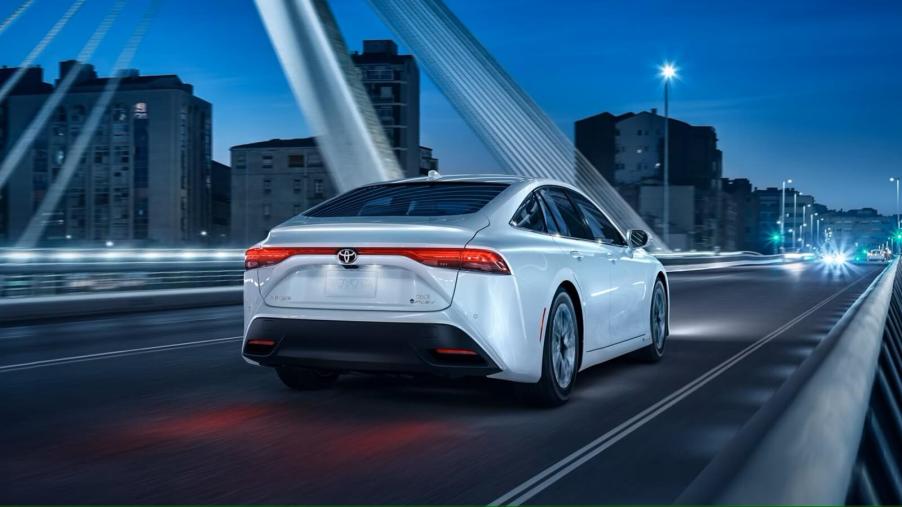
The 2 worst-selling cars in America have something in common, and it’s not EV batteries
Electric vehicles (EVs) are competitive with legacy gas-powered alternatives much more so than in decades past. However, the market for alternative-energy cars isn’t strong for every green segment. In that same vein, two of the worst-selling cars in America, the Hyundai NEXO and Toyota Mirai, are two green cars with a big factor in common.
The worst-selling cars in America, the Hyundai NEXO and Toyota Mirai are both hydrogen-powered rides
The three worst-selling cars in America each sold fewer than 500 models in the first three quarters of 2024. That said, the top two of those worst-selling models have a pretty substantial factor in common: they’re both hydrogen-powered rides.
| Make and model | 2024 sales (In units, as of Oct) | Starting price |
| Hyundai NEXO | 89 | $61,470 |
| Toyota Mirai | 346 | $51,325 |
| FIAT 500 (discontinued) | 438 | $17,990 |
| Genesis G90 | 1,017 | $90,950 |
| Audi A7 | 1,042 | $73,295 |
According to GoodCarBadCar, American buyers took home just 89 Hyundai NEXOs in the first three quarters of 2024. That might seem a bit paltry, and it commandingly earns the NEXO a spot atop the list of the worst-selling cars. However, the NEXO is only available in California. As such, the hydrogen fuel cell-powered SUV reaches a small portion of the North American market, even without its roundabout $62,000 starting price.
Not unlike the NEXO, the Toyota Mirai is a hydrogen fuel cell-powered nameplate. And, like the NEXO, the Mirai takes a top spot among the worst-selling cars in America. However, unlike the hydrogen-powered Hyundai, the Mirai is a sedan rather than a SUV.
Interestingly enough, the Toyota sedan outsold the Hyundai SUV in the first three quarters of 2024, despite the unquestioned popularity of SUVs in the United States. Both vehicles require hydrogen via pumps to power their battery-electric platforms. However, unlike the market’s current battery electric vehicles (BEVs), hydrogen-powered cars fill up more like ICE models. Owners can pull up to a California gas station with hydrogen architecture, fill up, and get back on the road.
Granted, the ease and convenience of a hydrogen platform is far more accessible than a BEV. However, the only two major market hydrogen fuel cell vehicles currently account for the two worst-selling cars in the country.



